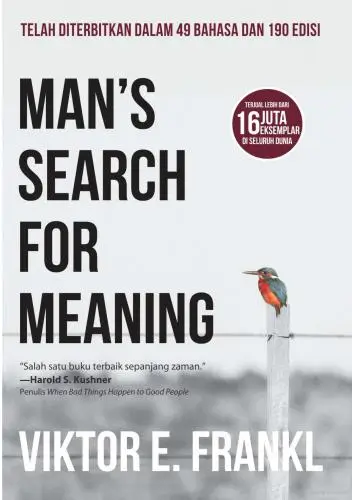
The Art of Happiness
A Handbook for Living
What's it about?
The Art of Happiness by Dalai Lama is a profound guide on finding true happiness in life. Through insightful teachings and practical advice, the Dalai Lama explores the keys to inner peace and contentment. This book offers a blend of ancient wisdom and modern psychology, providing readers with valuable tools to cultivate joy and fulfillment. A must-read for anyone seeking a more meaningful and fulfilling life.
About the Author
The Dalai Lama, spiritual leader of Tibetan Buddhism, advocates for peace, non-violence, and compassion. His teachings and numerous writings emphasize the importance of mindfulness, ethical living, and the interconnectedness of all beings. Awarded the Nobel Peace Prize, his work bridges Eastern and Western philosophies, promoting global harmony and understanding.
10 Key Ideas of The Art of Happiness
Cultivate Compassion
Compassion involves recognizing the suffering of others and then taking action to help.
It's rooted in the understanding that all human beings fundamentally seek happiness and wish to avoid suffering.
Cultivating compassion not only benefits others but also enhances our own sense of well-being by fostering a sense of connection with others, reducing isolation, and promoting a more positive outlook on life.
Learn DeeperStart Small: Begin by practicing compassion with those closest to you. This could be as simple as listening attentively when they speak, acknowledging their feelings without judgment, or offering support during difficult times.
Volunteer: Engage in community service or volunteer for causes you care about. This exposes you to the struggles of others and provides opportunities to contribute positively, enhancing your sense of connection and purpose.
Practice Self-Compassion: Remember that compassion starts with oneself. Be kind and forgiving towards your own mistakes and struggles. This fosters a compassionate mindset that naturally extends to others.
Educate Yourself: Learn about the challenges faced by different communities and cultures. Understanding the diverse forms of suffering can deepen your empathy and inform more effective ways to help.
Mindfulness and Meditation: Incorporate practices that cultivate mindfulness and compassion-focused meditation into your daily routine. These practices can enhance your emotional awareness and capacity for empathy.
- Example
If a friend is going through a tough time, instead of offering unsolicited advice, you might say, 'I'm here for you if you need to talk,' showing that you acknowledge their struggle and are willing to support them.
- Example
Participating in a local food drive or helping at a homeless shelter not only aids those in immediate need but also connects you with the broader community, fostering a sense of solidarity and shared humanity.
Practice Mindfulness
Mindfulness is the practice of being fully present and engaged in the moment, aware of your thoughts and feelings without distraction or judgment.
This practice helps in reducing stress and anxiety, improving attention and concentration, and enhancing overall mental well-being.
By being mindful, we can better appreciate the joys of life and navigate its challenges with calmness and clarity.
Learn DeeperStart with short daily sessions: Begin by dedicating just five minutes each day to mindfulness meditation. Find a quiet space, sit comfortably, and focus on your breath. Notice when your mind wanders, and gently bring your attention back to your breathing.
Incorporate mindfulness into routine activities: Practice being fully present during everyday tasks. For example, when you're eating, pay attention to the taste, texture, and smell of your food. When walking, notice the sensation of your feet touching the ground and the sounds around you.
Use reminders: Set periodic reminders on your phone or computer to pause and take a few deep breaths, bringing your focus to the present moment. This can help integrate mindfulness into your daily life.
Practice non-judgmental observation: When you notice thoughts or feelings arising, observe them without labeling them as 'good' or 'bad.' Acknowledge their presence and let them pass without getting caught up in them.
Engage in mindful listening: During conversations, focus fully on the speaker. Listen without planning your response. Notice the tone of their voice and the emotions behind their words. This not only enhances your mindfulness but also improves your relationships.
- Example
While waiting in line at the grocery store, instead of checking your phone, take the opportunity to practice mindfulness. Notice your surroundings, the sounds, the people around you, and how you're feeling in that moment without judgment.
- Example
Before starting your workday, take a few minutes to sit quietly and focus on your breath. This helps set a mindful tone for the day, making you more aware and focused as you tackle your tasks.
Embrace Impermanence
Understanding and accepting the impermanent nature of life can lead to greater peace of mind and happiness.
Recognizing that everything changes - our experiences, emotions, and even ourselves - helps us to let go of attachment and aversion.
This reduction in clinging to things as they are or fearing change can significantly decrease suffering.
Learn DeeperPractice Mindfulness Daily: Start by dedicating a few minutes each day to mindfulness meditation. Focus on your breath and observe your thoughts without judgment. This practice can help you become more aware of the impermanent nature of your thoughts and feelings, allowing you to let go of them more easily.
Keep a Gratitude Journal: Every evening, write down three things you are grateful for. This habit can shift your focus from what you lack or fear losing to appreciating what you currently have, reinforcing the concept of impermanence by highlighting how today's blessings are not guaranteed tomorrow.
Reflect on Change: Spend some time each week reflecting on changes that have occurred in your life, both good and bad. Acknowledge how you have adapted to these changes. This reflection can help you see change as a natural and manageable part of life, reducing the fear associated with it.
Declutter Regularly: Make it a habit to declutter your living space regularly. Letting go of physical items that no longer serve you can be a powerful exercise in releasing attachment and embracing the flow of life.
- Example
When you notice yourself getting upset about a change at work, take a moment to practice mindfulness. Breathe deeply and remind yourself that this change, like all things, is temporary. Reflect on past changes you've adapted to successfully.
- Example
If you find yourself clinging to a relationship that's clearly coming to an end, use your gratitude journal to focus on the positive aspects of the relationship and what it has taught you. This can help you accept the impermanence of relationships and appreciate the growth they bring.
Develop Self-Awareness
Self-awareness involves understanding your own thoughts, emotions, and behaviors.
It allows you to recognize your strengths and weaknesses, leading to personal growth and improved relationships.
By becoming more self-aware, you can make conscious choices that align with your values and contribute to your happiness.
Learn DeeperKeep a Journal: Start by writing down your thoughts, feelings, and reactions to different situations each day. This practice can help you identify patterns in your behavior and emotions, making it easier to understand what triggers certain responses.
Practice Mindfulness: Dedicate a few minutes each day to mindfulness meditation. Focus on your breath and observe your thoughts and feelings without judgment. This can enhance your self-awareness by making you more attuned to your internal state in the present moment.
Ask for Feedback: Reach out to close friends, family members, or colleagues for honest feedback about your behavior and how you come across to others. This external perspective can provide valuable insights into aspects of yourself that you may not be fully aware of.
Set Aside Reflection Time: Allocate time each week to reflect on your actions, decisions, and interactions. Consider what you did well and what you could improve. Reflecting on your experiences can help you understand your motivations and how they align with your values.
Experiment with New Behaviors: Once you've identified areas for improvement, try adopting new behaviors in small steps. For example, if you want to be more patient, practice pausing and taking deep breaths when you feel impatient. Monitor how these changes affect your interactions and feelings.
- Example
If you notice in your journal that you often feel anxious before meetings, you might implement a short mindfulness practice beforehand to calm your nerves and improve your focus.
- Example
After receiving feedback that you sometimes interrupt others during conversations, you could make a conscious effort to pause before responding, ensuring you fully listen to what others are saying.
Foster Gratitude
Gratitude is the practice of appreciating what you have, rather than focusing on what you lack.
It shifts your focus from scarcity to abundance, which can significantly increase your sense of well-being and happiness.
Keeping a gratitude journal or regularly reflecting on things you're thankful for are practical ways to cultivate gratitude.
Learn DeeperStart a Gratitude Journal: Every night before you go to bed, write down three things that you were grateful for that day. They can be as simple as enjoying a good cup of coffee or as significant as receiving support from a friend during a tough time.
Practice Mindful Appreciation: Take a few moments each day to pause and appreciate your surroundings or the people in your life. This could be silently expressing gratitude for the food you're about to eat or mentally thanking a coworker who helped you with a project.
Express Gratitude to Others: Make it a habit to verbally express your appreciation to people. Whether it's thanking a family member for their help around the house or sending a thank-you note to a friend just to acknowledge their presence in your life, letting others know you're grateful for them strengthens relationships and enhances your own sense of gratitude.
Use Gratitude Reminders: Set daily reminders on your phone or computer to take a brief moment to reflect on something you're grateful for. This can help integrate gratitude into your routine, especially on busy or challenging days.
- Example
If you enjoyed a peaceful morning walk, jot that down in your gratitude journal at night, reflecting on how it made you feel and why you're thankful for that experience.
- Example
When a colleague goes out of their way to assist you with a difficult task, take a moment to genuinely thank them, acknowledging their effort and expressing how it positively impacted your work.
Deeper knowledge. Personal growth. Unlocked.
Unlock this book's key ideas and 15M+ more. Learn with quick, impactful summaries.
Read Full SummarySign up and read for free!
The Art of Happiness Summary: Common Questions
Experience Personalized Book Summaries, Today!
Discover a new way to gain knowledge, and save time.
Sign up for our 7-day trial now.
No Credit Card Needed

Similar Books

The Let Them Theory
Mel Robbins
Flight SQA016
Amanda Radley
The Almanack of Naval Ravikant
Eric Jorgenson
Wherever You Go, There You Are
Jon Kabat-Zinn
Tuesdays with Morrie
Mitch Albom
Think Like a Monk
Jay Shetty
Man's Search for Meaning
Viktor E. Frankl
The Art of Spending Money
Morgan Housel
A Candle for Kiri
Edna Mae Holm
Serpent Rising: The Kundalini Compendium
Neven PaarTrending Summaries

Peak
Anders Ericsson
Never Split the Difference
Chris Voss
Smart Brevity
Jim VandeHei
The Psychology of Money
Morgan Housel
The First 90 Days
Michael D. Watkins
Atomic Habits
James Clear
Thinking, Fast and Slow
Daniel Kahneman
The Body Keeps the Score
Bessel van der Kolk M.D.
The Power of Regret
Daniel H. Pink
The Compound Effect
Darren HardyNew Books

The Art of Spending Money
Morgan Housel
$100M Offers
Alex Hormozi
A Candle for Kiri
Edna Mae Holm
Principles of Marketing, Global Edition
Gary Armstrong
Serpent Rising: The Kundalini Compendium
Neven Paar
Feeling Is the Secret
Neville Goddard
The 100 Best Business Books of All Time
Jack Covert
My Oxford Year
Julia Whelan
Trading in the Zone
Mark Douglas
